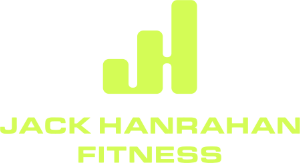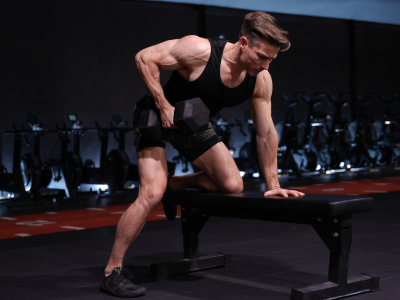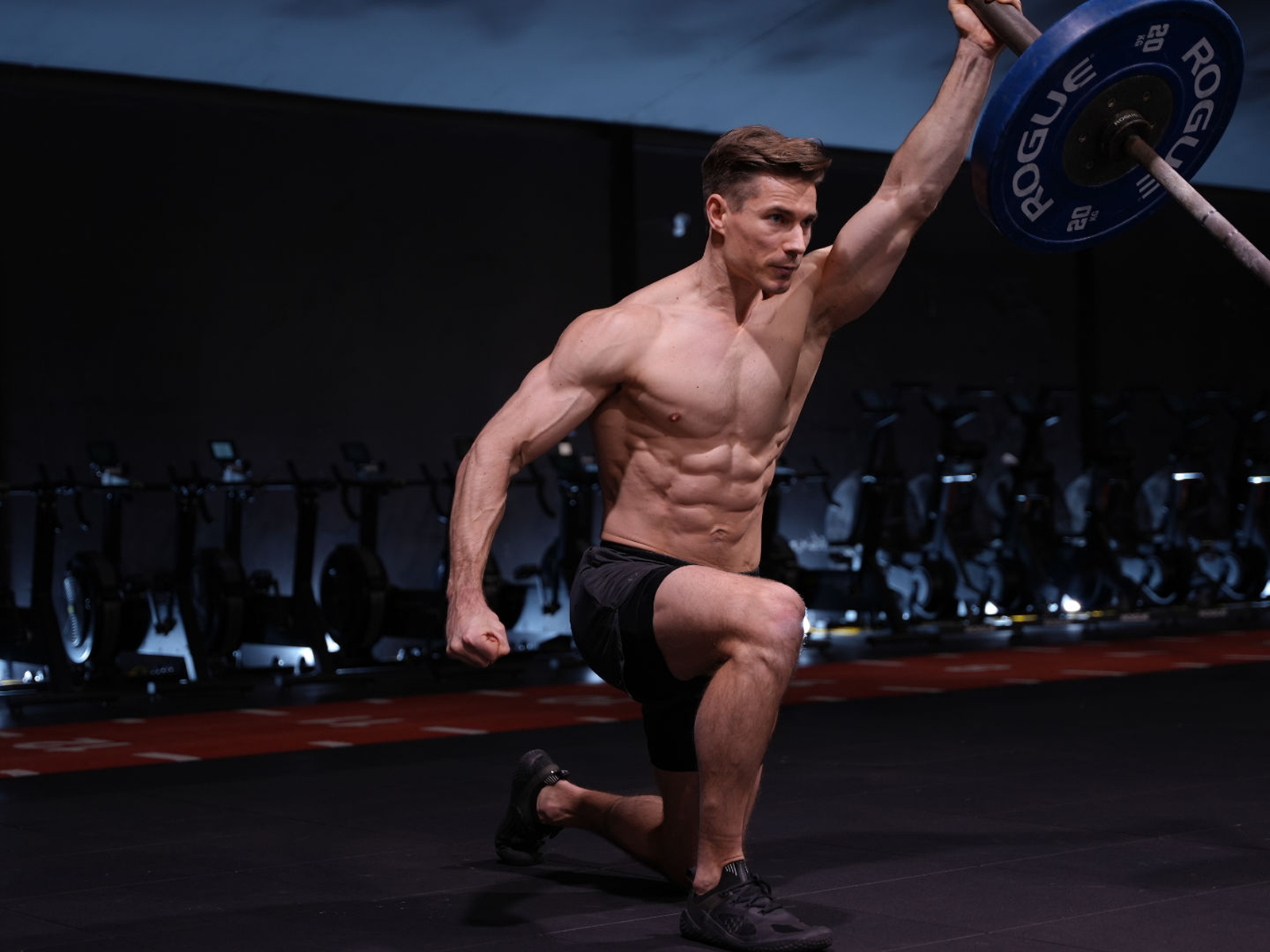It’s Monday, which means LEG DAY (If you train your chest and upper body we can no longer be friends).
After working through a few stretches, you’re ready for some leg exercises. You hit the squat rack, load up a barbell, and crank out a couple of light sets to grease the hips. It doesn’t feel that comfortable. Squats never do. But you proceed to add load to get some work sets in.
You un-rack the bar, set the feet and take a deep breath. As you squat down, you feel a discomfort in the lower back. It’s not enough to stop the set, but you’re cautious of loading heavier, so you struggle through a couple more rounds and move swiftly on to the next exercise.
This is a common theme amongst many gym goers.
Whether it’s lower back and knee pain or just general discomfort, squatting under such circumstances is not doing you any favours.
The reality is, barbell back squats are a tricky beast. It’s NOT a mandatory exercise and it’s NOT for everyone. It’s an exercise that requires significant ankle, hip, spine and shoulder mobility and one which demands the highest level of technical proficiency. Even if you tick both boxes, it just might not suit your anatomy.
Now for some good news.
There is more than one way to squat. Barbell back squats, barbell front squats, goblet squats, dumbbell squats—there are countless squat variations. Don’t think of ‘squats’ as an exercise but, rather, as a movement pattern that can be loaded in a myriad of ways.
Today I’m going to introduce you to the most joint friendly variation of them all. It’s not something you can easily incorporate into your home workout (though you could buy a landmine attachment, a barbell and some weight plates for your home gym) but it will help you build strength and muscle, it’s great for core training and it’s a staple squat variation in my own and my clients training programs. It’s the Landmine Squat.
SQUAT PAIN-FREE WITH THE LANDMINE SQUAT
The landmine squat involves front loading a barbell against your chest in what’s called the “goblet” position. It very effectively loads the hips so it’s great for building strength in your legs, muscle mass and brutally strong core muscles, all while being incredibly joint friendly.
Here are a few reasons why it’s a great pain-free alternative to barbell back squat:
- Front loading the barbell will allow you to squat with a more upright torso, which places less strain through the low back.
- The arc of the bar forces you to “sit back,” which will effectively load the glutes and hamstrings and take load off the knees.
- The “goblet” position of the bar puts the shoulders into a very strong and stable position without requiring them to express appreciable levels of mobility.
Here is a complete run through of the landmine squat – taking you through the set-up and demonstrating it in action.
LANDMINE SQUAT EXERCISE TUTORIAL
If you’re at the gym you can always have a trainer demonstrate; otherwise check out my video.
Here’s a recap of the key points in the exercise video:
Set up
Quick note: The set up is KEY. Do not ignore this step. Many people will attempt to “clean” the barbell up off the floor. This is not only dangerous, but it will prevent you from ever loading the bar with enough weight to challenge you.
- Prop the bar up onto a bench around chest height. You may need to place a weight plate underneath the loaded bar also, depending on your height. Doing this will allow you to get into a perfect squat position from the bottom up.
- Squat down and glue the end of the bar to your chest. Interlace fingers and keep the heels of the hands directly underneath the bar. Tuck your elbows to stabilise the shoulders.
- Inhale through your nose, brace abs and drive up. Proper squat form is essential.
Foot Placement
- It will take a few reps to find your ideal squat stance if you’re new to the exercise, so always start with a light weight before you add heavier weights.
- Depth: You should be standing with your feet behind the bar so you are leaning into it (The bar will arc outwards so you need space to sit back). As a general rule of thumb, taller lifters will need to start further back, particularly if you have long femurs. If you’re on the shorter side, you’re going to be better off a little closer.
- Stance: You can play around with width and toes either straight forward or slightly turned out. Start with feet just outside shoulders and toes slightly turned out. Then experiment with minor adjustments to find the perfect stance for you.
Programming
Treat this exercise like any other compound lift. Because of the SMART and SAFE set up that allows for heavier loading, the landmine squat can be performed for either strength or hypertrophy set/rep schemes. It’s very versatile. Here are a few ideas:
Strength
4×4-6 reps. (2.5-3 minutes between sets)
Hypertrophy (Option 1)
3×8-10 reps (90 seconds – 2 minutes between sets)
Hypertrophy (Option 2)
Think of this as a last exercise “finisher” to induce a sickening / delightful pump and skyrocket your heart rate!
3×15 (45 second rest between sets)
Wrapping Up
Landmine exercises are a great addition to anyone’s repertoire. Remember that training through pain or discomfort is never a good idea. You won’t make progress and you’ll be doing your body more harm than good. But that doesn’t mean you have to abandon squats completely.
You can build strength with the landmine squat, an incredibly joint-friendly alternative to the barbell back squat. It’s one of the most effective front squat variations to help you boost your strength and size. They’re easy on the knees and the lower back and it can be loaded heavy if you follow the protocol outlined in the video. Ensuring you have perfect squat form will help you build the foundations to progress your strength. Give it a try. Load it up and go and make some pain-free gains.
Did you like this post? Follow me on Instagram for daily workout inspiration and tips and join my weekly Wednesday Wisdom newsletter where I dive deep into the latest topics to help you train smarter and live better. Need something to tie you over while stuck at home? Download my FREE guide Band Training for Lifters here (includes info on what bands I use and a discount code to purchase them online).




Very well explained and illustrated.
Unfortunately, most gyms don’t have a secure mount for the other end of the bar.
I would add that if you experience back or hamstring pain, not only should you not press on through it. In some cases, especially sudden hamstring discomfort (especially on the way down), stop immediately. The next lift, should you do it, could leave you in pain for a week. But don’t just ease off, make an urgent appointment with a sports masseur who uses trigger point release. Book a one-hour appointment, not a half hour one.
Thank you for the new method. Will definitely be trying this out.
I am a 58 year old female. I have had shoulder pain and low back
Pain for years. I purchased your workout and since following you on Instagram for several months and now using your workout (I am on week 4) I have noticed less pain and have realized how bad my form was before. You are amazing! Great tips and a great tutorial. I only wish I had found you sooner! Thank you so much for sharing your knowledge!!!